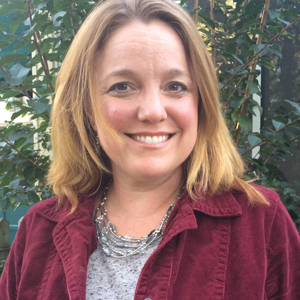Kate thought she was losing her mind. She knew she was a rational person, yet she could not stop thinking about – obsessing about – her uncertainty as a mother. What if she made a mistake? What if she harmed her child? What if she snapped and lost self-control? With each thought, Kate drew further into herself and her doubts. One question led to the next. Her anxiety felt unbearable.
Like many with mental obsessions, Kate got lost in her thoughts, unable to tend to her daily responsibilities. She was constantly reviewing her thoughts or seeking reassurance from others. She needed to know that everything was okay; that she was a good mother; that her children were safe and healthy.
While it’s natural for anyone to have intrusive or unwanted thoughts, those suffering from obsessive compulsive disorder (OCD) get stuck on them and are not able to dismiss such thoughts. The discomfort is so severe and unrelenting that they seek to soothe themselves with a compulsive act. A pervasive and genetic mental illness, OCD affects nearly five million Americans. Like other illnesses, OCD calls for professional treatment, not shame.
Common obsessions include fears about contamination, losing things, and harming others. Religious preoccupation, sexual impulses, and ordering are other examples of obsessions. The compulsions used to avoid the pain may include cleaning, checking, repeating, counting, ordering, touching, hoarding, or ritualistic eating. While the cycle is consistent amongst those with OCD, the obsessions and compulsions can be as varied as each individual. It’s also common for sufferers to exhibit multiple obsessions and compulsions as part of their illness.
Unlike those with overt compulsions, Kate’s compulsions to ease her anxiety were internal. She repeatedly questioned each move she made to ensure she was making the right decisions for her children to be certain she had not set them up to be harmed – by herself or by others. She tried to rationalize her thoughts to reduce her anxiety. She sought reassurance from her loved ones, even the children, that they were safe. Her OCD ruled her daily life as she spent hours looking for evidence that all was okay. It dictated how she functioned as a mother and as a partner.
While many of us overstress or have eccentric behaviors, such habits cross the line when they interfere with a person’s functioning or relationships. Whether the person can’t leave the house without checking the locks nine times or can’t stop searching their mind for rationalization or reassurance, the act never completely squelches the uncertainty. In fact, the cycle of obsessing and using compulsions to quell anxiety perpetuates the illness by reinforcing the cycle in the brain.
The cycle begins as the person with OCD experiences or anticipates a trigger. Perhaps, in Kate’s case, it’s taking the kids to school. A disturbing thought then arises such as, What if I have an accident along the way? Or, What if the kids are exposed to illness at school? Anxiety comes in response to the thought and that’s when the compulsions begin. Kate might wonder if it is worth taking the kids to school. She may check the traffic report and the CDC, or she may call the pediatrician or her spouse for assurance that it is safe and there are no communicable diseases at the school. The call, her research, and much self-rationalization offer Kate temporary relief from the obsession, and the children are finally able to get to school. That is, until the next trigger arrives.
What is Kate to do? What is her spouse to do? What should anyone with an OCD concern do? The first step is education. Check with the International Obsessive Compulsive Disorder Foundation, the Anxiety and Depression Association of America, or a mental health provider experienced in treating OCD for resources and information regarding treatment. Treatment often includes medication as well as therapy.
Next, find a skilled clinician who practices cognitive behavior therapy for reducing obsessions and compulsive behaviors. Exposure response therapy is part of this approach where clients face their fears and learn to delay and then resist the compulsions. While anxiety producing, this technique enables the client to feel the discomfort of the OCD and realize that, with exposure, uncertainty can be tolerated and even diminished over time.
While it’s difficult to watch our loved one suffer, it’s important to support the process by not enabling the OCD. Kate’s spouse could do this by not reassuring her fears about the safety of the children. By reassuring or assisting in the compulsive behaviors (for example, checking locks for the loved one), we validate the OCD and enable it to perpetuate and become more severe. Likewise, we want to encourage our loved one to not avoid the anxiety-provoking situation. Avoidance causes their world to become progressively smaller, but pushing through the anxiety enables someone with OCD to recognize she can handle the doubt and uncertainty in life.
We want to resist answering the ‘What if?’ questions while remaining sensitive to the pain. We want to listen to and validate the feelings of our loved one, but not soothe or neutralize the anxiety. Ultimately, we need to recognize that OCD is something our loved one has, not something she is.




